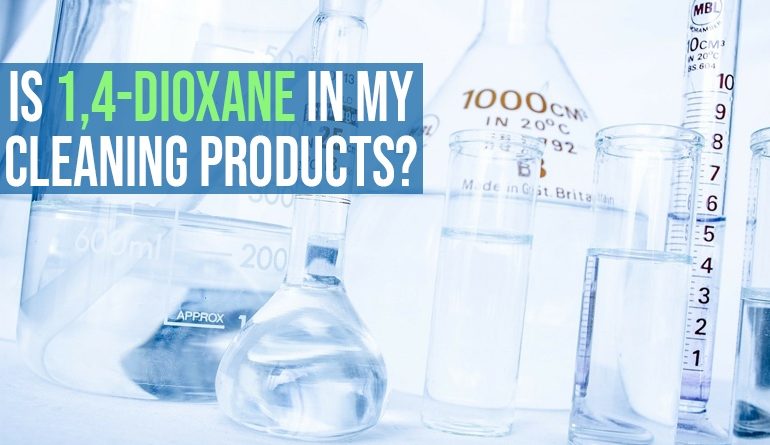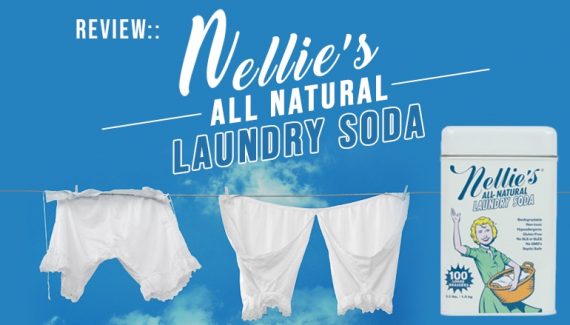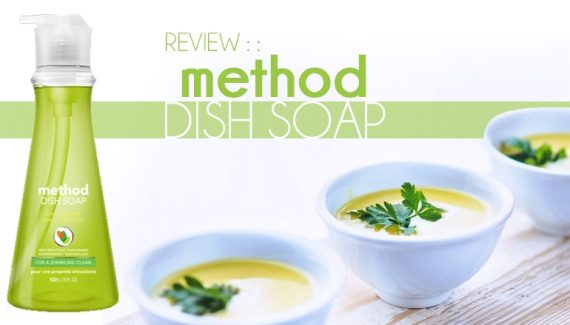Safe Household Cleaning is reader-supported. All reviews are independent and any products reviewed are purchased by the site owner. To help fund this model, some of the links on the site are affiliate links. If you decide to make a purchase from one of these links, this site will receive some commission. At no cost to you. It helps keeps this place running. Learn more
1,4 Dioxane is possibly the most infamous ingredient to have been added to cleaning products.
There’s a plethora of online scare stories about the chemical and its side effects.
There’s also a whole lot of bull written about it to.
The purpose of this article is, in true safehouseholdcleaning.com style, is to cut through the crap and determine:
- What 1,4 Dioxane is
- What it does
- Explain why it’s used in cleaning products
- What the real risks are
- Before letting you know how to avoid it
What is 1,4-Dioxane?
1,4-Dioxane is an industrial solvent and stabilizer, used in the manufacture of many household products. The chemical is classified as ‘possibly carcinogenic to humans’, and the EU (but not the FDA) sets exposure limits [1]. 1,4-Dioxane is rarely listed on ingredient labels, but can be found in the following products:
- Cleaning products (e.g. bleach, detergent, body wash, shampoo)
- Paints, dyes, fragrances
- Pesticides, antifreeze
- Toys and plastics
It has been estimated that on average a person is exposed to 0.061mg of 1,4-Dioxane every day, or over 22mg each year [2]. There is no risk of acute poisoning at this low level, but concern has been raised about the health implications for chronic exposure.
What does 1,4-Dioxane do?
1,4-Dioxane is so widely used because it’s highly soluble in water, and so can be used to ‘dissolve’ ingredients that normally wouldn’t mix together. This is important for the multistep industrial synthesis of component ingredients, such as: surfactants, resins, oils, and dyes.
Why is 1,4-Dioxane used in cleaning products?
There is no practical use for 1,4-Dioxane in cleaning products as such as its presence does not have any effect on how well a cleaning product removes dirt and stains. That said, it is used to make ingredients that may be in your cleaning products such as SLS or SLES. And it may be detectable in those ingredients if they are contaminated.
Manufacturers can (and should) remove 1,4-Dioxane from their products through ‘vacuum stripping’, but this is an expensive additional step [3]. Neither the FDA or EU formally limit the quantity of 1,4-Dioxane permittable in cleaning products (e.g. detergents), although the ingredient is banned in the EU for personal care products (e.g. shampoo).
What are the risks of using a product contaminated with it?
It’s difficult to determine the exact levels of 1,4-Dioxane in cleaning products, as studies have presented varying levels. FDA testing has shown no detectable 1,4-Dioxane in 28 of 35 samples (80%), whereas a 2009 study showed children’s bath products contained 1-35ppm [4]. Similarly, it is difficult to evaluate how these levels affect human health.
- Toxicity
The risk of toxicity is low from both short-term exposure and longer-term accumulation. A lethal dose of 1,4-Dioxane is around 5000mg/kg in animal studies (equal to 300grams for a 60kg adult), well-below current exposure of 22mg each year [2, 5]. Toxicity is associated with irritation, coughing, headache, vomiting, coma, and death. The only risk is with occupational exposure from working with significant quantities of 1,4-Dioxane.
The World Health Organization (WHO) classifies 1,4-Dioxane as ‘possibly carcinogenic to humans (Group 2B)’ [1]. The rating is from animal studies, in which exposure has been shown to increase the risk of liver and gallbladder carcinomas [6]. The US EPA has calculated that drinking water containing 30microgram/L would increase the risk of cancer by 0.001% (groundwater levels currently up to 5.5microgram/L in the US) [7]. Studies from the 1970s showed that those that work with 1,4-Dioxante were no more likely to be diagnosed with cancer [5].
With 1,4-Dioxane present is most household products, including children’s bath products, there is concern that exposure may affect development. There is currently no evidence that exposure to 1,4-Dioxane has any effects on fertility or normal development. In pregnant animal studies, 1,4-Dioxane only affected embryos at the highest doses, well-above expected exposure limits [5].
I don’t like what I’m reading, how do I avoid 1,4-Dioxane?
It is almost impossible to avoid 1,4-Dioxane, because it’s so widely used but rarely listed as an ingredient or contaminant. One method is to use simpler ingredients (e.g. sodium bicarbonate) or products that contain only a small number of ingredients. Some manufacturers test their products for 1,4-Dioxane, and brand their products ‘Dioxane-free’, but these standards vary.
We will check on this site if there are known contamination concerns, and we will tell you about them.
So check here, check other reputable sites and keep your wits about you.
References
[1] International Agency for Research on Cancer (IARC). (2018). Monographs on the Evaluation of Carcinogenic Risks to Humans. www.monographs.iarc.fr
[2] Tanabe, A., & Kawata, K. (2008). Determination of 1, 4-dioxane in household detergents and cleaners. Journal of AOAC International, 91(2), 439-444.
[3] FDA (2017). 1,4-Dioxane in Cosmetics: A Manufacturing Byproduct. www.fda.gov
[4] SafeCosmetics. (2009). Getting Contaminants Out of Children’s Bath & Personal Care Products www.safecosmetics.org
[5] EPA. (2016). 1,4-Dioxane (1,4-Diethyleneoxide). www.epa.gov
[6] Stickney, et al. (2003). An updated evaluation of the carcinogenic potential of 1, 4-dioxane. Regulatory Toxicology and Pharmacology, 38(2), 183-195.
[7] EPA. (1999). Integrated Risk Information System (IRIS) on 1,4-Dioxane. www.epa.gov



No Responses Yet